A conversation with pattern and pottery artist Dana Bechert
Alive with Tradition
"My eye is drawn to patterns everywhere—on textiles, pots, packaging, book covers," says Dana Bechert. "Just everywhere, even in melted snow, dappled sunlight, and wood shavings on the floor." This obsession is evident in the young artist's work. Ever since we came across her pottery, we've been completely smitten by her distinctive use of pattern—especially the pieces inspired by Native American techniques.
Berchert studied sculpture at the Maryland Institute College of Art, but after graduating in 2012, she's become a do-it-yourself polymath, driven by an urge to create; always thoughtfully and sustainably. Her projects span beekeeping, organic gardening, quilting, and, of course, ceramics.
She developed her signature Acoma Pueblo-inspired motifs around 2009, after seeing the work of Leslie Thompson at the American Craft Council Show in Baltimore. Dazzled by the carved porcelain pots, she asked Leslie to teach her the technique of sgraffito slip carving, which Thompson herself had learned from the famous contemporary Acoma Pueblo potter Lucy Lewis. Over time, Dana evolved her own distinct style, strongly influenced by her local environment. We reached out to Bechert to learn more about her affinity for patterns and production.
AC: Besides the Acoma Pueblo patterns, what are other sources of inspiration for you?
DB: The patterns I use are drawn from all over. One of my favorite patterns, and one I use often, is a variation on the Amish quilt pattern "tumbling blocks." It is seen in Japanese shibori textile prints, as well. I "discovered" this pattern on the dried skin of a fish, which I was studying in an observational nature drawing class. The pattern stretched over the unusual shape of the fish, accommodating for fins and eyeballs and other features. I spent days sketching, trying to figure out how to make it into a repeat cell that I could use for surface decoration on textiles and ceramics.
Quilts are another big inspiration for me, especially all-American pieced quilts. I live in rural Pennsylvania, and the Amish are everywhere. I often see a clothesline with quilts airing out, backdropped by planted fields of crops. I have books on books with images of these quilts, and they are a wealth of pattern inspiration. I have collected some antique quilts from shops around me too. They're just overwhelmingly beautiful.
I started making quilts of my own, passing time on days when it was too cold to work in the studio. My first quilt, of course, had my favorite fish pattern.
AC: What is your process of designing the patterns on your pottery?
DB: When I design a pattern, I start with a basic grid on the pot. Most often, I try to make the squares as square as possible, breaking up the different areas of the pots according to the vessel's girth. Then I combine multiple grid-based patterns on the same pot. I often don't sketch out a pot before I make it, so some come out much more successfully than others. Some forms just don't match with some patterns. At this point, I use many of the same patterns over again.
Lately, I have been making more pictographic imagery. On forms that are too misshapen to carve an accurate grid, I just do the whole thing freehand, pulling imagery out of my head at random. These are rather whimsical, images, like a ponytail, or a razor scooter, or an rubber band. They are, in some way, a representation of this place in history, the way hieroglyphs or cave paintings were. They say the oldest record of human history is pottery shards. They last a really long time, and I get a kick out of the idea that someone could dig up this "time capsule" thousands of years from now and see a scrunchie or a tamagotchi.
AC: How do pattern and shape correlate? Were you ever surprised by the effect of one on the other?
DB: The pattern has a tremendous influence on the form. Some forms can be accentuated by a particularly directional pattern, and some can be very confused, like an optical illusion. The forms I am drawn to are usually angular, with clear distinctions between planes on the pot. These are further isolated by shifts in pattern. If these pots were glazed a solid color, all you would have is shadow or color to define certain areas. It depends on lighting and on the success or failure of glaze combinations. I have a lot of control over the outcome and the viewer's experience with my forms.
AC: Regarding your use of pattern as well as your reliance on handcraft, do you see yourself as part of a tradition?
DB: To be clear, Leslie passed her skill on to me, but it doesn't mean I am the only one doing it. The Acoma Pueblo is a very active artist community, and they currently make pots that are more beautiful and skillfully crafted than mine will ever be. I do believe that because I continue making things by hand—after it has become so easy and cheap to buy those same things made in a factory—I am part of a tradition of homemade things. I find these things to be so much more valuable and beautiful than those I can buy in any old store. This is one of my main motivations for making utilitarian work. In a somewhat obsessive way, I have always wanted to make everything I use and own. From building my own house, to sculpting a garden that grows all my own food, down to dishes, clothes, blankets, bedstraw-stuffed beds, and so on. Historically, this is not so far off; just a couple of hundred years ago in America, this was the only option. There would have been multiple family members working on these projects pretty much nonstop. That highly efficient family organism is very inspirational to me. It is something you can still see in the Amish, by the way. I guess I'm trying to say, my feeling of responsibility to preserve a traditional culture goes way deeper than my pot making. It is my whole life.
-
Text by
-
Anna Carnick
Anna is Pamono’s Managing Editor. Her writing has appeared in several arts and culture publications, and she's edited over 20 books. Anna loves celebrating great artists, and seriously enjoys a good picnic.
-
-
German Translation by
-
Annika Hüttmann
Born in the northern city of Kiel, Annika's mixed German-Swedish roots mean that she grew up exposed to a smorgasbord of Scandinavian design. The Pamono translator’s latest passion, however, is for German vases produced between the 1950s-70s, of which she now has a collection of over 70!
-
More to Love
Dazzle Fan Vase by Dana Bechert
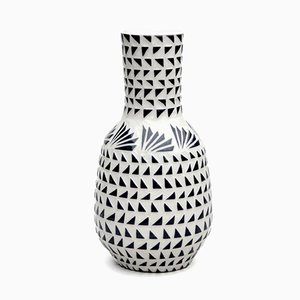
Woven Zig Vase by Dana Bechert

Open Equal Vase by Dana Bechert
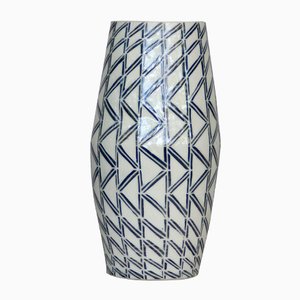
Labyrinth Cylander by Dana Bechert

Flying Geese Cylander by Dana Bechert
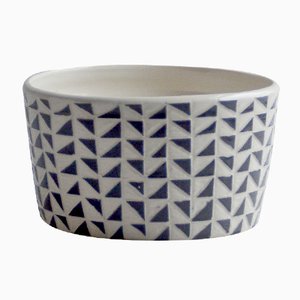
Blue Marbled Bowl from Dana Bechert
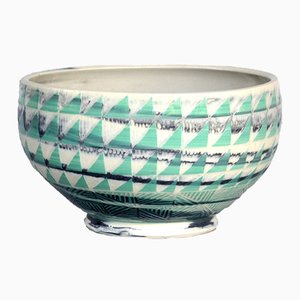
Arrow Bowl by Dana Bechert
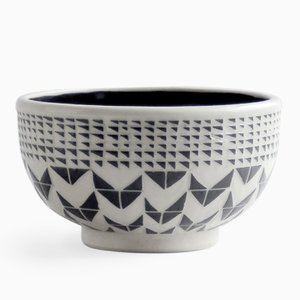
Wacky Inlay Vase by Dana Bechert

Milk Jug Vase by Dana Bechert
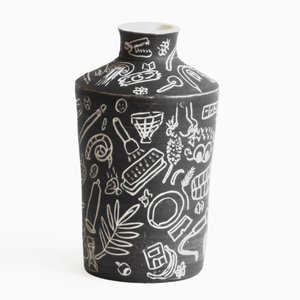
Wide Optics by Dana Bechert
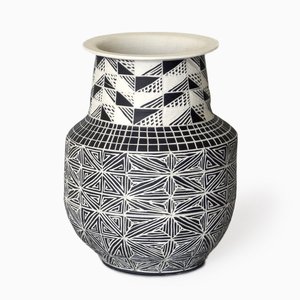
Flared Fineline Vase by Dana Bechert

Brick Dash Vase by Dana Bechert
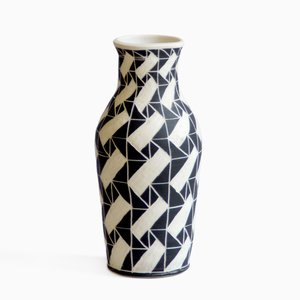
Equal Inlay Vase by Dana Bechert



